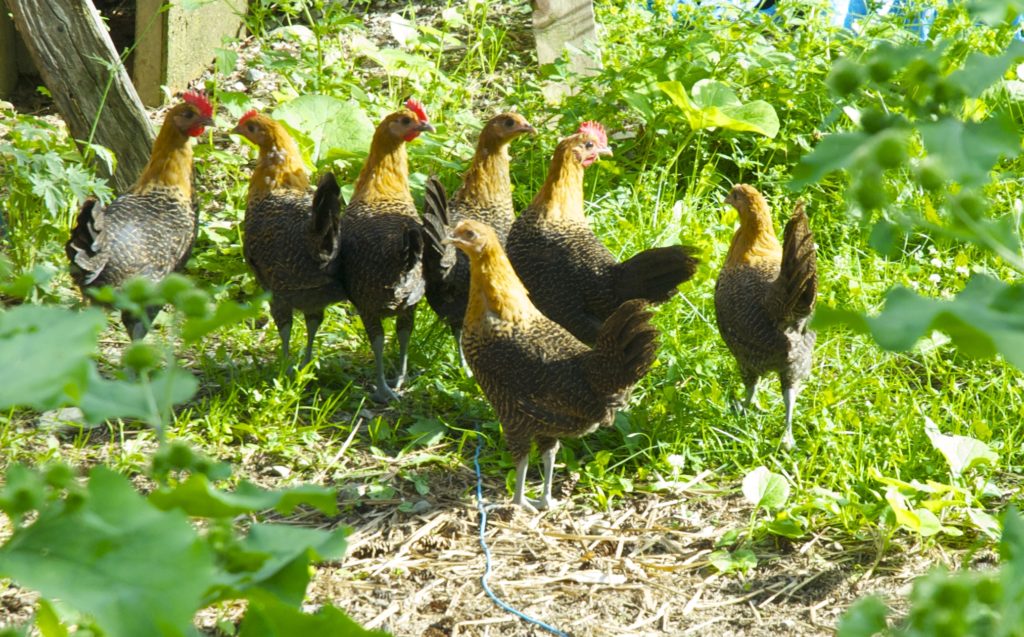A farm by any other name is still a lot of hard work
Ask any four or five people to define “farming” and you will, in all likelihood, get four or five different answers. Farming is one of those things that while people know it when they see it or smell it, they have a hard time putting it into words.
The United States government does have a definition of a farm which reads, “any place from which $1,000 or more of agricultural products were produced and sold, or normally would have been sold, during the year.”
But anyone who lives on, takes care of or just plain enjoys their own land knows full well it’s so much more than that.

Here on Rusty Metal Farm, we have for decades placed it in the “non-working farm” category. I’m not completely sure what that really means, other than we don’t derive a huge income from the land and it’s a heck of a lot more work than the title implies.
Certainly, over the 35-odd years we’ve been on the farm, sporadic efforts have been made at would could be called farming. And few of which could be called rousing successes.
I guess the first stab at any sort of agri-something was the year my late husband Patrick came home and proudly showed me the 1,000 pine tree seedlings he’d been given by “a guy.” I have no idea who this guy was, but after planting 1,000 pine trees, I was ready to put him in hole number 1,001.
The thing is, all bundled up the 500 red pine and 500 white pine seedlings did not look that big of a job. And with all the wide-eyed, bushy-tailed enthusiasm of two clueless back-to-the-landers, Patrick and I selected a field on the south end of the farm, tossed shovels, a metal pole with a pointy end, a wheelbarrow and the seedlings into the back of his old Ford Bronco and set out to spend a day planting our forest. Heck, I even packed a picnic.
Three sweltering, buggy summer days and a lot of talking to each other through clenched teeth later, we were still at it. Minus any subsequent picnics.
Three days of taking turns pushing a wheelbarrow full of seedlings while the other used the pointy metal pole to make a hole into which a single baby tree was dropped. Then using our feet we’d tamp the dirt securely around the seedling and move on to the next. Endlessly.
In the end, we did have an impressive forest planted, albeit in miniature. But we figured time and Mother Nature would do their part. Which they did, just not in the way we had hoped. Because we had planted them in the middle of a hot and dry summer, many of the seedlings simply took one look around, sighed and wilted. The ones that did manage to grow into maturity turned out to be a favorite delicacy of porcupines who did an admirable job of eating enough bark to kill them.
Today, decades later, five of those 1,000 pines remain. I treasure each and every one of them,
Our next big farming adventure came the summer we decided to clear out one of our pastures by mowing down the scrub brush and small trees that had sprouted up over the years. Why we wanted to clear that particular field remains a mystery to this day, but clear it we would.
This time we decided to use mechanical equipment — our ancient Massey Harris farm tractor and an even older mowing device. So old, mind you, it was the kind that you’d sit on while it was pulled by horses.
Never one to shy away from a farm modification project, Patrick configured the mower so it could be pulled by the tractor as he drove it. Yours truly was assigned the task of sitting on the mower to raise, lower and otherwise manipulate its cutting blade in accordance with Patrick’s hand signals.
It all looked so good on paper. And, it actually worked pretty well. Right up until the mower blade swept through a ground hornet nest. The good news is my screams were loud enough for Patrick to hear over the tractor’s engine and he immediately came to a stop. The bad news is that stop placed the mower — and me — directly over the decimated nest of several thousand suddenly homeless hornets.
Luckily, they were so confused they did not sting me, and we were soon on our mowing way. Until we hit the second ground hornet nest. At that point I walked — well, ran — off the job. And it all worked out in the end as Patrick ended up attending an auction soon after and purchased a used field mower that was designed to be pulled by a tractor and operated by its driver.

And that field? I still have it mowed — and I still can’t tell you why.
Over the years other attempts at farming activities have included harvesting hay and collecting fir tips to sell for animal food and wreath-making, respectively. We also raised honey bees, harvested firewood and raisined chickens for eggs and meat for personal use.
Does all of that add up to a non-working farm? I honestly don’t know. What I do know is that it does all add up to a heck of a lot of work. And frankly, I love every minute of it. Ground hornets notwithstanding.
